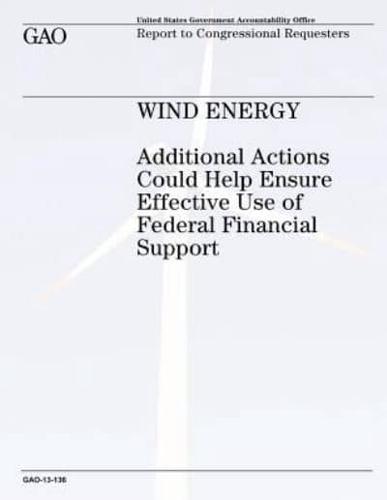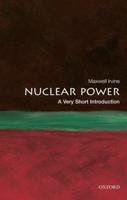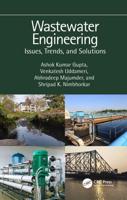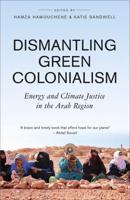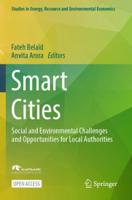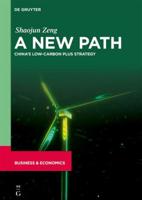Publisher's Synopsis
Wind energy has been the fastest growing source of U.S. electric power generation in recent years. The increase in federal funding for wind technologies and involvement of multiple agencies has raised questions about fragmented, overlapping, or duplicative federal support. In this report, GAO examines federal wind-related initiatives-programs or groups of agency activities that promoted wind energy through a specific emphasis or focus. GAO (1) identifies wind-related initiatives implemented by federal agencies in fiscal year 2011 and their key characteristics; (2) assesses the extent of fragmentation, overlap, and duplication, if any, among these initiatives, and the extent to which they were coordinated; and (3) examines how agencies allocate support to projects through their initiatives and the extent to which they assess applicant need for support. GAO identified 82 federal wind-related initiatives, with a variety of key characteristics, implemented by nine agencies in fiscal year 2011. Five agencies-the Departments of Energy (DOE), the Interior, Agriculture (USDA), Commerce, and the Treasury-collectively implemented 73 of the initiatives. Initiatives supporting deployment of wind facilities, such as those financing their construction or use, constituted the majority of initiatives and accounted for nearly all obligations and estimated tax subsidies related to wind in fiscal year 2011. In particular, a tax expenditure and a grant initiative, both administered by Treasury, accounted for nearly all federal financial support for wind energy. The 82 wind-related initiatives GAO identified were fragmented across agencies, most had overlapping characteristics, and several that financed deployment of wind facilities provided some duplicative financial support. The 82 initiatives were fragmented because they were implemented across nine agencies, and 68 overlapped with at least one other initiative because of shared characteristics. About half of all initiatives reported formal coordination. Such coordination can, in principle, reduce the risk of unnecessary duplication and improve the effectiveness of federal efforts. However, GAO identified 7 initiatives that have provided duplicative support-financial support from multiple initiatives to the same recipient for deployment of a single project. GAO also identified 3 other initiatives that did not fund any wind projects in fiscal year 2011 but that could, based on their eligibility criteria, be combined with 1 or more initiatives to provide duplicative support. Of the 10 initiatives, those at Treasury accounted for over 95 percent of the federal financial support for wind in fiscal year 2011. Agencies implementing the 10 initiatives allocate support to projects on the basis of the initiatives' goals or eligibility criteria, but the extent to which applicant financial need is considered is unclear. DOE and USDA allocate support based on projects' ability to meet initiative goals such as reducing emissions or benefitting rural communities, as well as other criteria. Both agencies also consider applicant need for the support of some initiatives, according to officials. However, GAO found that neither agency documents assessments of applicant need; therefore the extent to which they use such assessments to determine how much support to provide is unclear. Unlike DOE and USDA, Treasury generally supports projects based on the tax code's eligibility criteria and does not have discretion to allocate support to projects based on need. While the support of these initiatives may be necessary in many cases for wind projects to be built, because agencies do not document assessments of need, it is unclear, in some cases, if the entire amount of federal support provided was necessary. Federal support in excess of what is needed to induce projects to be built could instead be used to induce other projects to be built or simply withheld, thereby reducing federal expenditures. GAO-13-136
